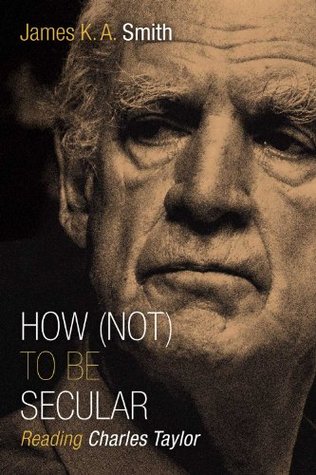More on this book
Community
Kindle Notes & Highlights
Read between
April 5 - August 3, 2019
there didn’t seem to be an essential place for the worship of God, other than through the cultivation of reason and constancy”
‘the church of your choice’
voluntary association.
“excarnation”
from disruptive transcendence to ordered immanence.
“A way of putting our present condition [our ‘secular age’] is to say that many people are happy living for goals which are purely immanent;
immediate surroundings of our lives as existing on this ‘natural’ plane, however much we might believe that they indicated something beyond” (p. 143).
Even Christians, we might say, became functionally disenchanted.
failing to note an irony: the “naturalization” that is essential to exclusive humanism was first motivated by Christian devotion.14 “The irony is that just this, so much the fruit of devotion and faith, prepares the ground for an escape from faith, into a purely immanent world” (p. 145).
What emerges, then, is “a new self-understanding of our social existence, one which gave an unprecedented primacy to the individual”
“Human agents are embedded in society, society in the cosmos, and the cosmos incorporates the divine” (p. 152).15
This disembedded, buffered, individualist view of the self seeps into our social imaginary
imaginary
“take”
“the way thin...
This highlight has been truncated due to consecutive passage length restrictions.
in fact what we take for granted is contingent ...
This highlight has been truncated due to consecutive passage length restrictions.
For a significant expansion on this theme, see Brad S. Gregory, The Unintended Reformation: How a Religious Revolution Secularized Society (Cambridge: Harvard University Press, Belknap Press, 2012).
And yet by so investing the material world with significance, these movements also gave immanence a robustness and valorization that no longer seemed to need the transcendent to “suspend” it. In other words, the work of art that could be “iconic” — a window to the transcendent — becomes so fixating in its naturalistic realism that it absorbs our entire gaze and interest and ends up functioning as an idol. For
Art of art's sake and no longer an icon to God. This untethered the supernatural/metaphysical from the art allowing it to be appreciated for its sake. It the JUST NEEDED A NAME to allow it to be separate form God. I.e. Humanism.
And the daughter killed the Mother, Cotton Mather.
alluding to a “frame” that both boxes in and boxes out, encloses and focuses — is meant to capture the world we now inhabit in our secular age: “this frame constitutes a ‘natural’ order,
‘immanent’ world, over against a possible ‘transcendent’ one”
We now inhabit this self-sufficient immanent order, even if we believe in transcendence.
“a threat, a
dangerous temptation,
distra...
This highlight has been truncated due to consecutive passage length restrictions.
obs...
This highlight has been truncated due to consecutive passage length restrictions.
[the immanent frame] is the sensed context in which we develop our beliefs.”
social imaginary;
supernova in our secular age.
the issue isn’t whether you inhabit the immanent frame, but how.
“sense,” a feel
“sensation,”
“I felt a sense
was somehow ‘struck ...
This highlight has been truncated due to consecutive passage length restrictions.
“sense.”
“gut feeling,” a “vibe.”
“romantic”
feel what it is like to inhabit the cross-pressured space of a secular
exemplars.
reconversions,
nostalgia.
articulated a telos for human flourishing
definition of the demands of Christian faith closer into line with what is attainable in this world,
The distance between the ultimate City of God and the properly Christian-conforming earthly city is reduced” (p. 735).
In other words, the moralistic closure of this gap (to which nostalgic converts are prone)
This reenchantment of language is a direct protest against the flattening that resulted from univocity,
“neologism”
The same risk attends religious, liturgical language: the prayers “can become dead, routine” (p. 759).
you can’t shake the sense that there must be something more?”


